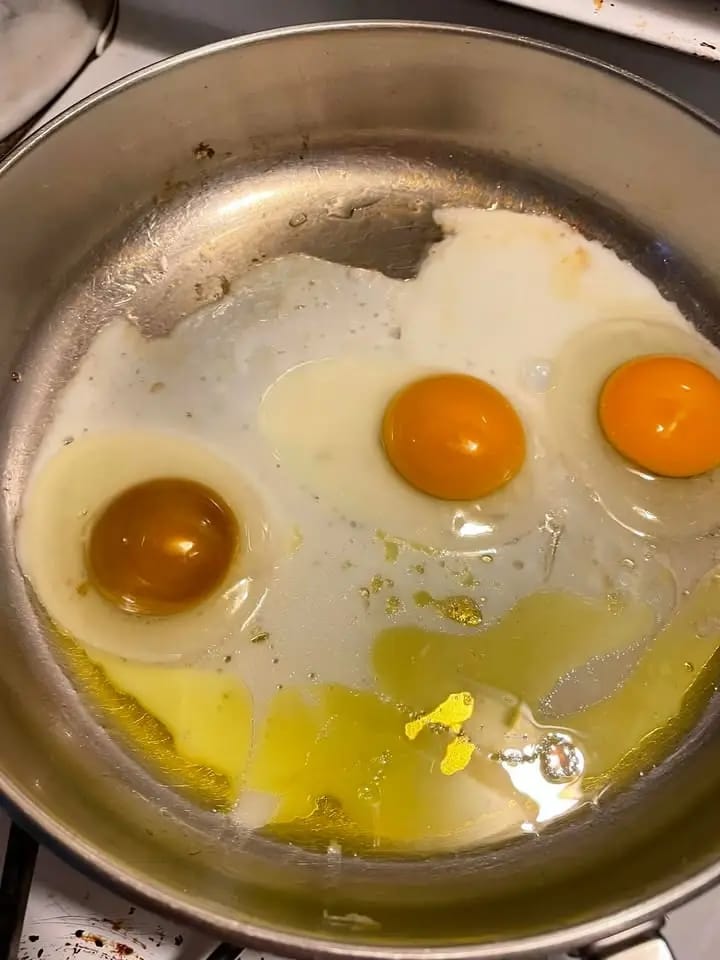🥚 Why Does an Egg Yolk Look Dark or Metallic?
You crack open a fresh egg, expecting to see the familiar golden yolk — but instead, you notice something unexpected: a dark orange, greenish, or even metallic-looking yolk. Should you be concerned? Is it safe to eat? And what causes it in the first place?
Let’s crack the mystery.
🟠 First Things First: What’s “Normal” for an Egg Yolk?
Egg yolk color can range naturally from pale yellow to deep orange depending on the hen’s diet, not necessarily the egg’s freshness or safety. In general:
Pale yellow yolks = grain-based, commercial diets
Bright orange yolks = diets rich in greens, corn, marigold petals, or bugs
Very dark yolks = can occur when hens eat pigmented plants or high-protein feed
So, color intensity alone isn’t a bad sign — in fact, darker yolks often contain more nutrients like carotenoids, which are antioxidants.
🧪 What About a Metallic Sheen or Strange Color?
Sometimes yolks might appear greenish-gray, shiny, or have a metallic tint. Here’s what could be going on:
1. Overcooked Eggs (Hard-Boiled)
When hard-boiled eggs are overcooked, a greenish or gray ring can form around the yolk.
This is caused by a chemical reaction between sulfur in the egg white and iron in the yolk, forming ferrous sulfide.
It’s harmless — just a visual quirk from too much heat.
2. High Iron in the Hen’s Diet
A metallic tint might come from a hen’s iron-rich diet, especially if supplemented with minerals.
It doesn’t make the egg unsafe, but it may slightly affect taste or appearance.
3. Contamination or Spoilage?
If the yolk looks green, black, or iridescent AND the egg smells bad or has an off texture, it may be spoiled.
Always trust your senses: if it smells rotten or sulfuric, toss it out.
⚖️ Safe to Eat or Not?
